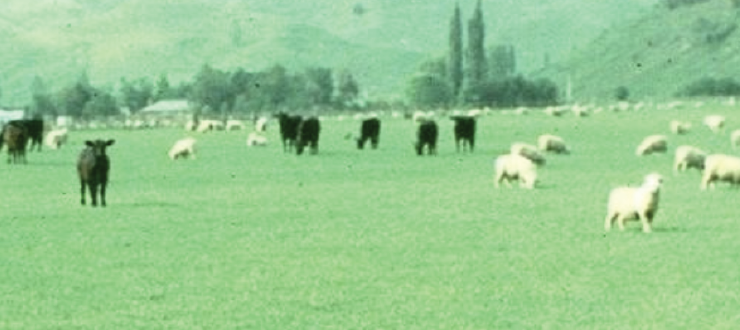
MIXED SPECIES GRAZING
There are major differences among animal species with regard to how they graze. Cattle graze by hooking their tongues around forage, gripping it between the tongue and lower incisor teeth, and then tearing it from the plants. Sheep, goats, and horses bite off forage much as humans might take a bite out of an apple, but are more selective and can graze pastures more closely than cattle.
Differences in manner of grazing, what plants are selected, extent of selectivity, and closeness of grazing can have a major impact on the botanical composition of pastures and on overall pasture productivity. This is one reason why a good argument can be made for grazing more than one species of animal in a given pasture, at least in certain situations.
Cattle prefer to graze grasses and legumes in about a 2 to 1 ratio. If given the option, sheep will consume a slightly lower percentage of grass, but even more legumes and other forbs (various broadleaf plants) than cattle. Horses will eat some legumes and other forbs, but prefer a significantly higher percentage of grass in their diets than do cattle or sheep. Goats and deer may consume browse (shrubs or trees) to make up as much as 50% of their diet, with the remainder consisting of more forage from legumes and other forbs than from grasses.
Other things being equal, all types of grazing animals prefer young, tender forage, but cattle tend to eat some of the more mature grass that other grazing animals may reject. Also, a given species of animal will usually graze around dung spots from other species, but not those of the same species. Thus, grazing more than one type of animal in a pasture may result in greater overall forage utilization, resulting in a higher overall carrying capacity and an increased gain per acre.
Grazing goats with cattle, in particular, can offer a great benefit with regard to controlling certain unwanted species such as multiflora or Cherokee rose, blackberries and other briars, and seedling trees. (In New Zealand, a high percentage of cattle and sheep producers keep a few goats on their farms mainly for the purpose of controlling a thorny shrub called gorse). Sheep are less effective in controlling thorny and woody plants, but will selectively graze certain herbaceous weeds that cattle do not like.
Horses are notorious for “spot grazing.” In other words, they will closely graze certain areas in a pasture and leave other areas virtually untouched. If allowed to do this for long, they will put tremendous stress on the plants in the closely grazed areas, which may result in lowered productivity or death of desirable forage plants, as well as much wasted forage.
There are also some other possible benefits of mixed species grazing. Parasite numbers may be lower when cattle are grazed with sheep or goats, as they are not affected by the same parasites. Some producers have reported a lower incidence of predator attacks on sheep and goats as a result of grazing cattle along with them. Finally, having more than one species of grazing animals on a farm results in diversification of income sources, which amounts to a way of hedging against price cycles.
Most cattle producers don’t spend much time thinking about other types of grazing animals, but this concept may deserve some consideration. The narrow margin of profit for many livestock operations necessitates development of methods to increase efficiency of forage and land use. Mixed species grazing is not the answer to all problems that livestock producers face, but it does have some potential advantages.
Foraging Ahead is a column presented by Ragan & Massey and written by Dr. Don Ball, Professor Emeritus at Auburn University. Dr. Ball is one of the authors of the popular book “Southern Forages,” which can be found via a computer search that uses the words, “Southern Forages, The Fertilizer Institute.”